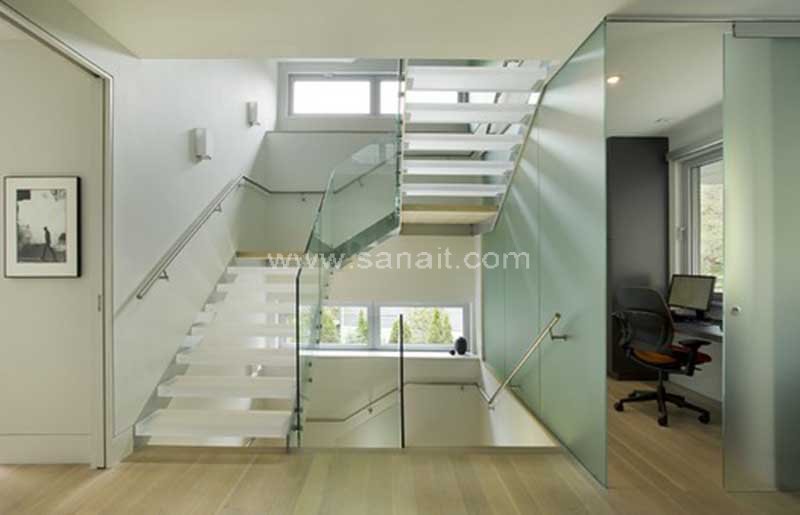Architecture is not merely about erecting buildings; it is about creating spaces that evoke emotions and leave a lasting impression. One element of architectural design that has been gaining prominence in recent years is the use of acrylic staircases. These transparent marvels not only serve a functional purpose but also add a touch of contemporary elegance to any structure. In this article, we will explore the beauty of perspective through the lens of acrylic staircase design in architecture.

A Transparent Innovation:
Acrylic, a lightweight and durable plastic material, has revolutionized staircase design. Its transparent nature allows architects to create staircases that appear to float in mid-air, lending a sense of weightlessness to the structure. This innovation has enabled architects to push the boundaries of design and create staircases that are not only functional but also visually stunning.
- The Illusion of Space:
One of the most significant advantages of acrylic staircases is their ability to create the illusion of space. By eliminating bulky support structures and using transparent materials, architects can make small spaces appear larger and more open. This design choice is particularly valuable in urban settings, where space is often limited. Acrylic staircases enhance the overall aesthetics of the building by making it feel more spacious and inviting.
- Connecting Levels Seamlessly:
Acrylic staircases serve as elegant connectors between different levels of a building. Whether in residential homes, commercial spaces, or public structures, these staircases provide a smooth transition from one floor to another. Their transparent design allows natural light to pass through, creating a beautiful interplay of light and shadow that enhances the ambiance of the space.
- Sculptural Masterpieces:
Acrylic staircases are not just functional; they are also works of art. Architects and designers have embraced the sculptural possibilities that acrylic offers, resulting in staircases that are as much about aesthetics as they are about utility. The fluid and organic shapes that can be achieved with acrylic materials add a sense of dynamism to the design, turning staircases into focal points within a building.
- Material Versatility:
Acrylic staircases come in various forms, offering architects and designers the flexibility to tailor their designs to the specific needs of a project. Whether it’s a spiral staircase, a straight flight, or a helical design, acrylic can be molded and shaped to fit the vision of the architect. Moreover, acrylic can be combined with other materials such as wood, metal, or stone to create unique and striking compositions.
- Sustainability and Maintenance:
In addition to their aesthetic appeal, acrylic staircases are also environmentally friendly. Acrylic is a recyclable material, and its production generates fewer carbon emissions compared to traditional building materials like concrete and steel. Furthermore, acrylic is easy to clean and maintain, making it a practical choice for long-term use in high-traffic areas.
Conclusion:
Acrylic staircase design in architecture represents a convergence of functionality and beauty. These transparent structures not only serve as functional elements within buildings but also contribute to the overall aesthetics and ambiance. With their ability to create the illusion of space, seamlessly connect levels, and serve as sculptural masterpieces, acrylic staircases are becoming an essential element of modern architectural design. As architects continue to explore the possibilities of this innovative material, we can expect to see even more breathtaking and awe-inspiring acrylic staircase designs in the future, further enhancing the beauty of our built environment.
